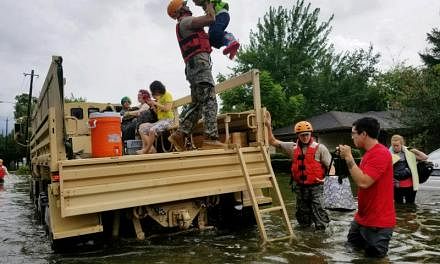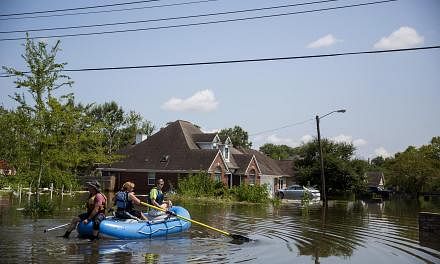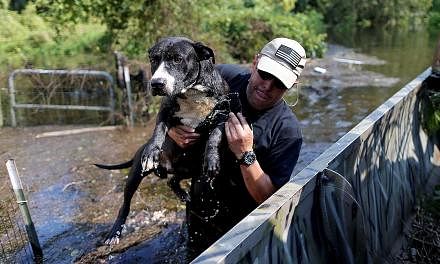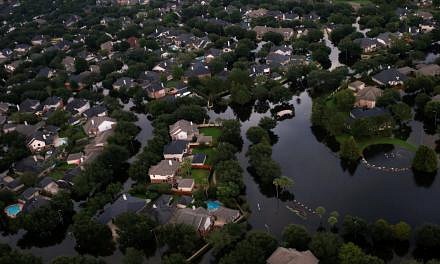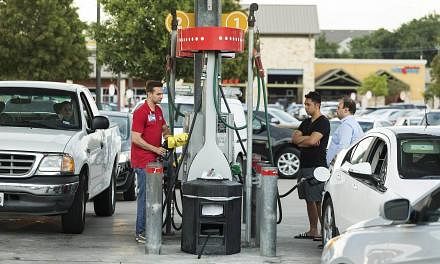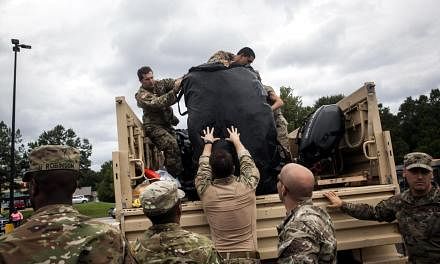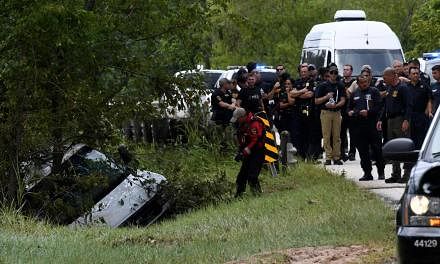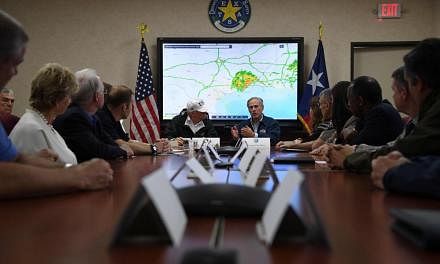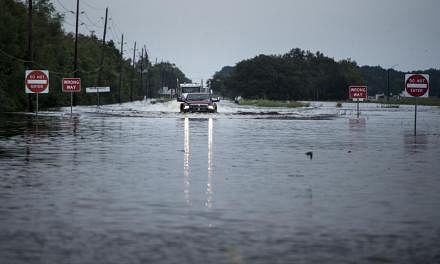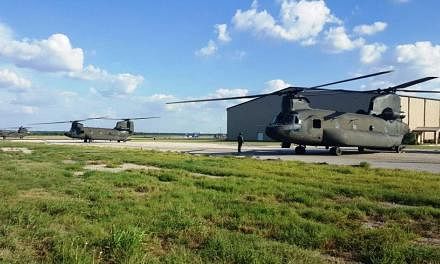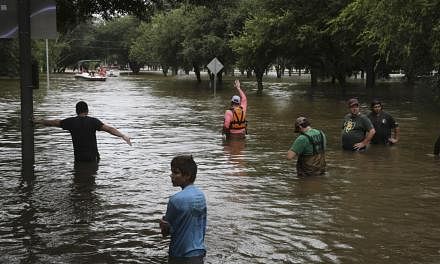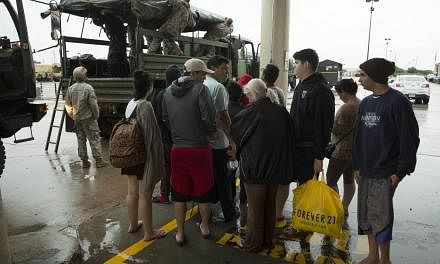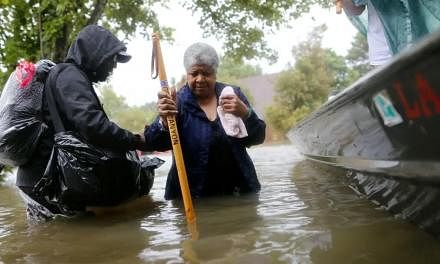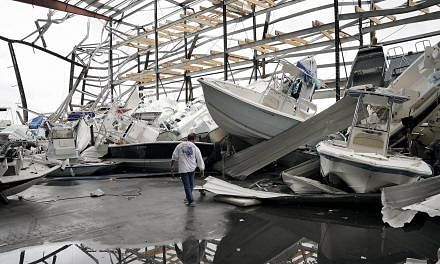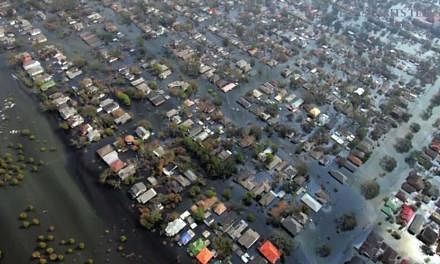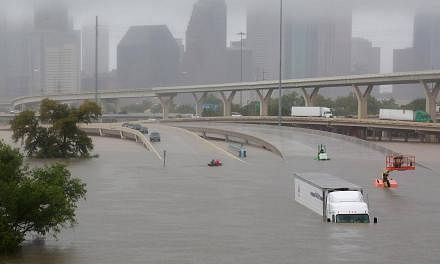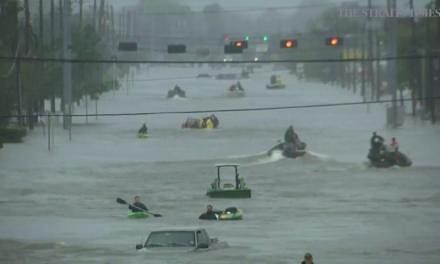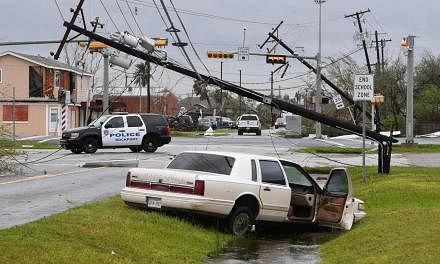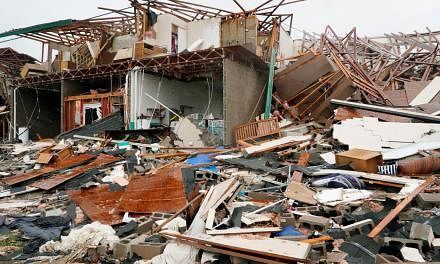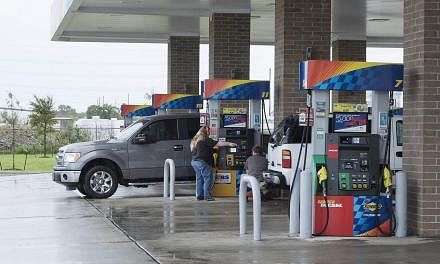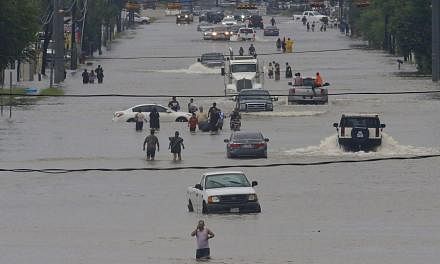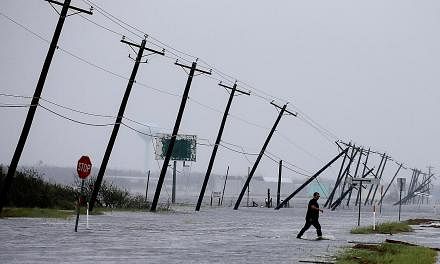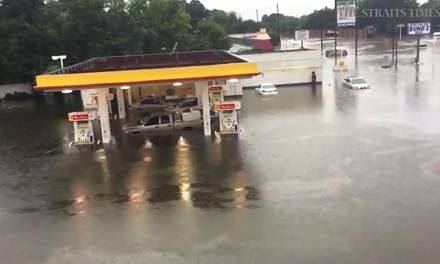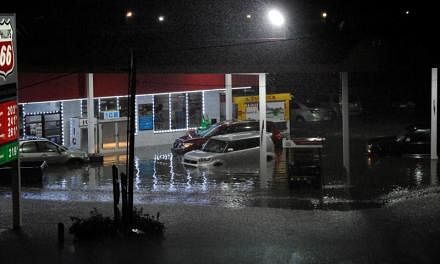HOUSTON (NYTIMES) - A week after Texas was slammed by Hurricane Harvey, this region was still engulfed in crisis Saturday (Sept 2), with weary residents of Houston searching for ways to repair swamped homes and salvage possessions even as others faced new orders to evacuate.
In cities and small towns to the east, thousands of others remained stranded by rising waters and were still without dry shelter.
After seven days, frustration and exhaustion had set in for many. Parts of Beaumont, a city of nearly 120,000, and a vast array of towns east of Houston were cut off from one another and coping with flooded roads, submerged homes and limited power, with no relief in sight. For a third day, residents of Beaumont were going without drinking water after flooding knocked out pumps for the city's water system.
"This has been a trying week," Amelia Nickerson said, as she and her husband hauled yet another bag of trash out of their Houston home where the waters had risen after the storm made landfall late Aug 25. Remains of their bedroom walls were being carried out, one soggy wheelbarrow load at a time.
"This was so much worse than what we expected," she said.
President Donald Trump visited Texas and Louisiana on Saturday, his second trip to the affected region last week. In Houston, he toured a temporary shelter, helped volunteers load boxes of supplies and said he was "very happy" with a recovery that, in many places, had barely begun.
As officials were only beginning to assess the widespread damage across the region and as rescue flights and boat missions continued through parts of the state, Trump was expected to ask Congress to approve US$7.8 billion (S$10.58 billion) for disaster relief in the coming days, and US$6.7 billion more by the end of the month, White House officials said.
Texas officials said 440,000 residents had applied for aid from the Federal Emergency Management Agency, and tens of thousands of people remained in shelters. Local authorities said at least 47 deaths in Texas were related or suspected to be related to the storm.
Residents of the region said the days since the storm's first landfall had been a long, dreadful blur. Some described spending hours moving their families to safe places, only to be moved along to another town a few days later when the waters rose again where they were. Others said they had gone a week without clean clothes, showers or cooked meals.
Houston was sputtering back to life - some restaurants were open and buses were running - and school officials were assessing the damage before a delayed first day of school Sept 11.
A spokesman for the Houston Independent School District said that water had gotten into at least 202 of the district's 284 schools and that officials were deep-cleaning 115 schools. Officials have not yet checked on 39 schools.
And even as some residents were returning to their homes, Mayor Sylvester Turner ordered a mandatory evacuation for a west Houston neighborhood that officials said was likely to remain inundated because of releases of water from two nearby reservoirs.
Turner said the evacuation would affect about 300 people who had stayed in their homes and would not apply to dry homes. In a news conference Saturday evening, he said that power to affected homes would be turned off Sunday morning.
Beaumont, about 80 miles east of Houston, was still in crisis mode. After the city's water service shut down early Thursday, some homes have had sporadic trickles of water coming out of their faucets. Officials warned residents to boil water and were distributing bottled water, and on Saturday evening, the city said it believed that it had found a way to bring back partial service.
Rescuers, volunteers and others bringing help to the area were weary by Saturday, as well. Unlike in some storms where waters recede quickly, this one seemed to move in slow motion, spreading around the area and continuing to affect new communities.
"I don't even know what day it is right now," said Tony Gonzales, a worker who had come from Laredo to assist efforts to raise dozens of utility poles toppled around Port Aransas. "It's been a 100-hour week," said Gonzales, who looked bleary from the heat and was battling a cold.
Chief Warrant Officer Pedro Vargas-Lebron, who pilots Black Hawk helicopters for the Texas Army National Guard and spent much of the week on search-and-rescue missions, said he could recall only a vague outline of recent days: the missions, the rescues, the weather.
Each mission, he said, proved startling. "Every time we went out, it was the same thing," he said. "Every time we flew over a flooded area, I'd say the same exact thing to my crew: 'Oh my God, this is crazy.'" He added, "Every step is just, 'Oh my God, I can't believe these many people are out here.'" The signs of exhaustion were seen all around.
Colleen Grice and her husband plunked down in the lobby of an Extended Stay America hotel in Corpus Christi on Friday night. Her family, from a town near Beaumont, had fled to a hotel in Beaumont to avoid the storm's high waters.
Then the water went off in Beaumont. So the family was moving again, this time with no sense of when it may return home.
"We're tired, I guess," Grice said. "It's hard."



